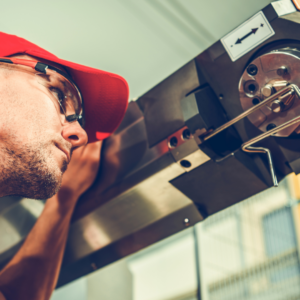Exploring Material Options in Wire Forming and Tube Bending
Today, we’re diving deep into the thrilling world of wire forming and tube bending, focusing on the materials employed in these essential manufacturing processes.
At AWC Industries, we pride ourselves on our decades of experience in wire forming and tube bending. We’re passionate about sharing our knowledge and helping customers understand the nuances behind creating their unique components. We’ll explain the different types of materials used in wire forming and tube bending and how each can affect the final product.
Defining Wire Forming and Tube Bending
To begin, let’s first provide a brief explanation of what wire forming and tube bending involve. Wire forming is a process where the wire is shaped into specific forms or shapes based on a design. Tube bending, on the other hand, involves manipulating tubes or pipes into different angles and curves to fit a specific function. Both processes play a crucial role in various industries, from automotive to healthcare and everything in between.
Material Considerations
When it comes to wire forming and tube bending, the material used dramatically influences the finished product’s durability, flexibility, and function. Here are some common materials that AWC Industries works with and how each can fit different applications well.
- Steel: A favorite choice for wire forming and tube bending due to its durability and strength. Two types commonly used are cold-rolled steel and stainless steel. Cold-rolled steel is known for its precise dimensions, smooth surface finish, and excellent mechanical properties. Stainless steel is praised for its corrosion resistance, making it an ideal choice for applications exposed to moisture or corrosive substances.
- Copper: Another material often utilized for wire forming and tube bending. It has excellent electrical conductivity and is corrosion-resistant, making it suitable for electrical wiring and plumbing applications. Copper is also appreciated for its malleability, allowing it to be formed into complex shapes without compromising its strength.
- Aluminum: This material is treasured for its lightweight property, corrosion resistance, and excellent thermal conductivity. It’s often used when weight reduction is crucial without sacrificing strength and durability. The electrical industry, automotive sector, and aerospace applications often use aluminum for wire forming and tube bending.
- Brass: An alloy of copper and zinc, it is renowned for its strength, flexibility, and corrosion resistance. Its ability to withstand high temperatures makes it an excellent choice for hot-water applications. Additionally, brass is a common element used in decorative elements due to its bright gold appearance.
Making the Right Choice
Choosing the suitable material for your wire forming or tube bending project is a critical decision that depends on various factors. You must consider the environment in which the component will operate, the pressures it will be subject to, and the aesthetic requirements of the end product.
At AWC Industries, we help you navigate these considerations, ensuring the perfect material choice for your project. Our skilled team has an in-depth understanding of these materials and their behavior during wire forming and tube bending processes. We’re committed to delivering high-quality, custom components that meet each client’s unique needs.
So, are you ready to kickstart your next project? Trust the professionals at AWC Industries for all your wire forming and tube bending needs.
Contact us today to learn more about our wire forming, tube bending, and other services.

